The Grasses and Grains ClipArt gallery offers 423 illustrations of various types of grasses and grains, many of which are grown agriculturally for consumer use.
All illustrations in the ClipArt ETC collection are line drawings. If you are looking for color photographs of grasses, please visit the ClipPix ETC website.

Italian Rye Grass
Italian Rye Grass (Lolium Italicum) differs from the Perennial Rye Grass in the florets having long,…

June Grass
June grass (Poa prstensis) is also known as Green Meadow grass, Common Spear Grass, Kentucky Blue grass.…

June Grass
June grass (Poa prstensis) is also known as Green Meadow grass, Common Spear Grass, Kentucky Blue grass.…
Many-flowered Darnel
The Many-flowered Darnel (Lolium multiflorum) is the most showy species of rye grass cultvated. Three…

Many-flowered Darnel
The Many-flowered Darnel (Lolium multiflorum) is the most showy species of rye grass cultvated. Three…
Meadow Brome Grass
The Meadow Brome Grass (Bromus pratensis) is a perennial weed in the corn-fields of England, and is…
Meadow Brome Grass
The Meadow Brome Grass (Bromus pratensis) is a perennial weed in the corn-fields of England, and is…
Meadow Fescue
The panicle of the Meadow Fescue (Festuca pratensis) is nearly erect, branched, close, and somewhat…

Meadow Fescue
The panicle of the Meadow Fescue (Festuca pratensis) is nearly erect, branched, close, and somewhat…
Meadow Foxtail Grass
The Meadow Foxtail (Alopecurus pratensis) has an erect, smooth stem, two or three feet high with swelling…

Meadow Foxtail Grass
The Meadow Foxtail (Alopecurus pratensis)has an erect, smooth stem, two or three feet high with swelling…
Meadow Oat Grass
Meadow Oat Grass (Avena pratensis) is a perennial grass that grows to a height of about eighteen inches.…

Meadow Oat Grass
Meadow Oat Grass (Avena pratensis) is a perennial grass that grows to a height of about eighteen inches.…

Meadow Oat Grass
Meadow Oat Grass (Avena pratensis) is a perennial grass that grows to a height of about eighteen inches.…
Meadow Soft Grass
The Meadow Soft Grass (Holcus lanatus), also referred to as Velvet Grass, has its spikelets crowded…
Meadow Soft Grass
It is a common native grass species in parts of northern Europe and is a hardy pasture grass. It is…
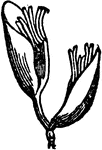
Meadow Soft Grass
Tufted or Meadow Soft grass are other oft used names and in North America it is known as Velvet Grass.

Meadow Spear Grass
Meadow Spear Grass (Glyceria nervata), also known as Nerved Manna Grass, has a broad, open panicle,…

Meadow Spear Grass
Meadow Spear Grass (Glyceria nervata), also known as Nerved Manna Grass, has a broad, open panicle,…

Meadow Spear Grass
Meadow Spear Grass (Glyceria nervata), also known as Nerved Manna Grass, has a broad, open panicle,…

Meadow Spear Grass
Meadow Spear Grass (Glyceria nervata), also known as Nerved Manna Grass, has a broad, open panicle,…

Melica Grass
An illustration of melica grass; "2, The panicle. a, a spikelet; b, the empty glumes; c, a flowering…
Oat
The common oat (Avena sativa) is a species of cereal grain grown for its seed. While oats are suitable…
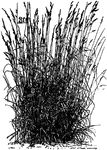
Orchard grass
A tall, tufted grass. It is adapted to deep, rich soils, as it roots deeply, yet it grows on poor soils…

Orchard Grass
Orchard Grass (Dactylis glomerata) also called Rough Cock's-foot, flowers in dense clusters. The stem…

Orchard Grass
Orchard Grass (Dactylis glomerata), also known as Rough Cock's-foot, flowers in dense clusters. The…
Perennial Rye Grass
The Perennial Rye Grass (Lolium perenne) has a smooth, erect stem growing from fifteen inches to two…

Perennial Rye Grass
The Perennial Rye Grass (Lolium perenne) has a smooth, erect stem growing from fifteen inches to two…

Quaking Grass
Quaking Grass (Briza media) has an erect panicle with very slender spreading branches. The spikelets…
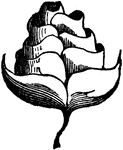
Quaking Grass
Quaking Grass (Briza media) has an erect panicle with very slender spreading branches. The spikelets…
Red Fescue Grass
The leaves of the Red Fescue (Festuca rubra) are broadish and flat. The root is extremely creeping and…
Red Fescue Grass
The leaves of the Red Fescue (Festuca rubra) are broadish and flat. The root is extremely creeping and…
Redtop Grass
The Redtop Grass (Agrostis vulgaris), also known as Burden's Grass, is a perennial grass with smooth,…

Redtop Grass
The Redtop Grass (Agrostis vulgaris), also known as Burden's Grass, is a perennial grass with smooth,…
Reed Canary Grass
The Reed Canary Grass (Phalaris arundinacea) has a panicle that is slightly branched, clustered, and…

Reed Canary Grass
The Reed Canary Grass (Phalaris arundinacea) has a panicle that is slightly branched, clustered, and…
Rice
Rice (Oryza sativa) is a long panicled grass, having, when ripe, some resemblance to oats, the seed…

Rough-Stalked Meadow Grass
The Rough-Stalked Meadow Grass (Poa trivialis) has webbed florets and a five-ribbed outter palea. The…
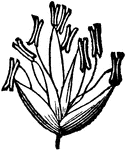
Rough-Stalked Meadow Grass
The Rough-Stalked Meadow Grass (Poa trivialis) has webbed florets and a five-ribbed outter palea. The…
Rye
Rye (Secale cereale) is a grass grown extensively as a grain and forage crop. Rye is characterized by…
Sheep's Fescue Grass
Sheep's Fescue (Festuca duriuscula) is known by its narrow panicle. It has short, tufted, bristle-shaped…
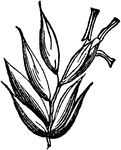
Sheep's Fescue Grass
Sheep's Fescue (Festuca duriuscula) is known by its narrow panicle. It has short, tufted, bristle-shaped…
Slender Foxtail Grass
The Slender Foxtail (Alopecurus agretis) is distinguished from the meadow foxtail by its slender panicle,…

Slender Foxtail Grass
The Slender Foxtail (Alopecurus agretis) is distinguished from the meadow foxtail by its slender panicle,…

Slender Foxtail Grass
The Slender Foxtail is distinguished from the meadow foxtail by its slender panicle, larger spikelets…

Slender Spiked Grass
The Slender Spiked Fescue (Festuca loliacea) is species nearly allied to the tall fescue, and possesses…
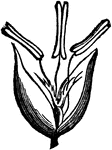
Slender Spiked Grass
The Slender Spiked Fescue (Festuca loliacea) is species nearly allied to the tall fescue, and possesses…

Sounthern Bent Grass
The Southern Bent Grass (Agrostis dispar) furnished rather course hay, and leads a large produce on…
Sounthern Bent Grass
The Southern Bent Grass (Agrostis dispar) furnished rather course hay, and leads a large produce on…
Sweet-scented Vernal Grass
Sweet-scented Vernal Grass (Anthoxanthum odoratum) has three-flowered spreading spikelets. The lateral…

Sweet-scented Vernal Grass
Sweet-scented Vernal Grass (Anthoxanthum odoratum) has three-flowered spreading spikelets. The lateral…

Sweet-scented Vernal Grass
Sweet-scented Vernal Grass (Anthoxanthum odoratum) has three-flowered spreading spikelets. The lateral…
Tall Fescue Grass
Tall Fescue Grass (Festuca elatior) is found commonly in moist meadows. The panicle is contracted, erect,…
Tall Fescue Grass
Tall Fescue Grass (Festuca elatior) is found commonly in moist meadows. The panicle is contracted, erect,…

Tall Meadow Oat Grass
Tall Meadow Oat Grass (Arrhenatherum avenaceum), or Tall Oat Grass is the avena elatior of Linnaeus.…
Tall Meadow Oat Grass
Tall Meadow Oat Grass (Arrhenatherum avenaceum), or Tall Oat Grass is the avena elatior of Linnaeus.…


